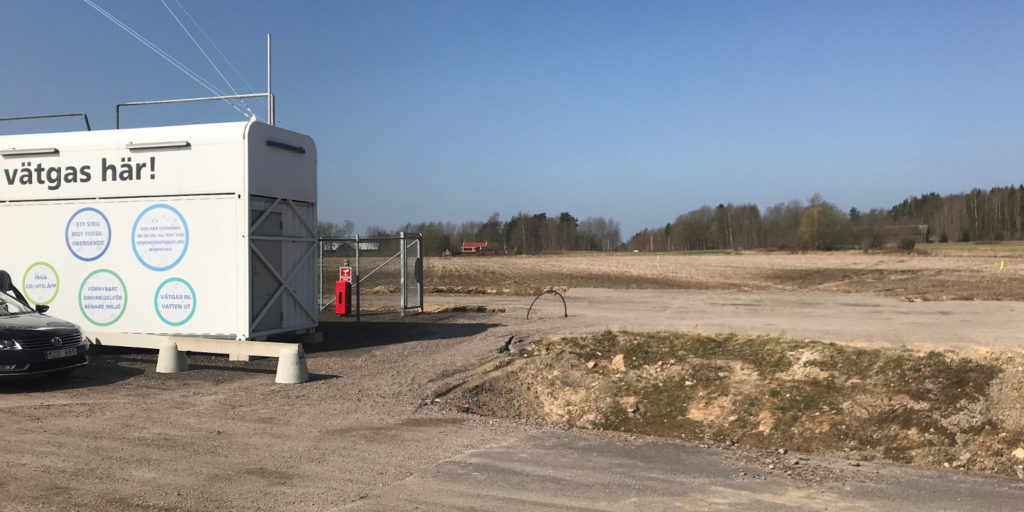Swedish company, Nilsson Energy AB has selected AT Solar as a partner for the construction of a 250 kW PV system in Mariestad. This is a very special project: the generated solar power will be stored in a battery and converted into hydrogen, in order to be used for charging fuel cell vehicles.
It is called “Renewable Energy (RE) 8760” and is to be built next to an existing hydrogen filling station in the Swedish city, the company told pv magazine. It added that it is the first project to use electricity from a PV system to generate hydrogen. The concept comes from Nilsson Energy.
The municipality of Mariestad is injecting €1.43 million in the project, Jesper Sidenius, the company’s Sales Dircetor Solutions of Denmark-based Better Energy – parent company of AT Solar – said. The money will flow not only into the new PV installation, but also into a lithium nickel manganese cobalt oxide (NMC) battery storage device from Samsung SDI, with a capacity of 154 kWh. The installation of both should begin in the coming week, said AT Solar.
As for the operation of the pilot project, “RE 8760” the companies explained that, in order to guarantee a steady production of hydrogen, the solar power will first be stored in the battery. If its state of charge is at 80% of capacity, the production of hydrogen starts. This will stop again when the battery charge reaches 30%.
The produced gas is then compressed to 300 bar in a tank, which corresponds to a storage capacity of 700 kg. The annual production of hydrogen by the PV system is estimated to be up to 40 tons. Loaded with it, fuel cell cars could travel about four million km.
A major advantage of the concept is that the hydrogen generated by the PV system in the summer could be stored for the low-sun time in winter, and can be used for charging the vehicles. With the RE 8760 technology, companies and private individuals could become grid-independent through the storage of hydrogen in the heat and electricity sector, the companies said.
The reconversion of the hydrogen into electricity is accomplished by a fuel cell. About 60% of the solar power generated by the PV system could be conserved in this way, making it a good method for the long-term storage of renewable energy.
Nilsson Energy is currently developing off-grid concepts for the supply of electricity and heat for two preschools, which will be built by 2021.
In addition, the companies are in the process of using the RE 8760 technology in the Swedish municipality of Vargarda. There, six houses, each with 29 apartments, will be renovated and should receive an independent energy supply. The installation of a 109 kW PV system on the first roof is planned for June, said Sidenius.
This content is protected by copyright and may not be reused. If you want to cooperate with us and would like to reuse some of our content, please contact: editors@pv-magazine.com.









By submitting this form you agree to pv magazine using your data for the purposes of publishing your comment.
Your personal data will only be disclosed or otherwise transmitted to third parties for the purposes of spam filtering or if this is necessary for technical maintenance of the website. Any other transfer to third parties will not take place unless this is justified on the basis of applicable data protection regulations or if pv magazine is legally obliged to do so.
You may revoke this consent at any time with effect for the future, in which case your personal data will be deleted immediately. Otherwise, your data will be deleted if pv magazine has processed your request or the purpose of data storage is fulfilled.
Further information on data privacy can be found in our Data Protection Policy.